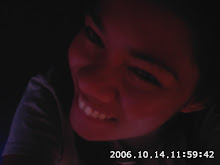In English, it is common to use more than one adjective before a noun - for example, "He's a silly young fool," or "she's a smart, energetic woman." When you use more than one adjective, you have to put them in the right order, according to type. This page will explain the different types of adjectives and the correct order for them.
Opinion An opinion adjective explains what you think about something (other people may not agree with you). Examples:
silly, beautiful, horrible, difficult
Size A size adjective, of course, tells you how big or small something is. Examples:
large, tiny, enormous, little
Age An age adjective tells you how young or old something or someone is. Examples:
ancient, new, young, old
Shape A shape adjective describes the shape of something. Examples:
square, round, flat, rectangular
Colour A colour adjective, of course, describes the colour of something. Examples:
blue, pink, reddish, grey
Origin An origin adjective describes where something comes from. Examples:
French, lunar, American, eastern, Greek
Material A material adjective describes what something is made from. Examples:
wooden, metal, cotton, paper
Purpose A purpose adjective describes what something is used for. These adjectives often end with "-ing". Examples:
sleeping (as in "sleeping bag"), roasting (as in "roasting tin")
Some examples of adjective order
Opinion Size Age Shape Colour Origin Material Purpose
a silly young English man
a huge round metal bowl
a small red sleeping bag
Subscribe to:
Post Comments (Atom)



No comments:
Post a Comment